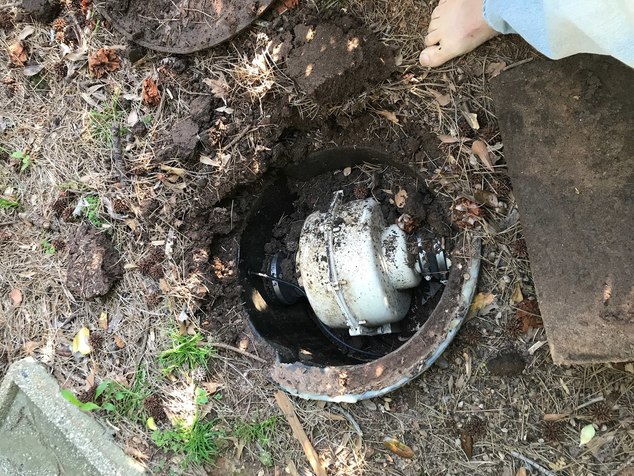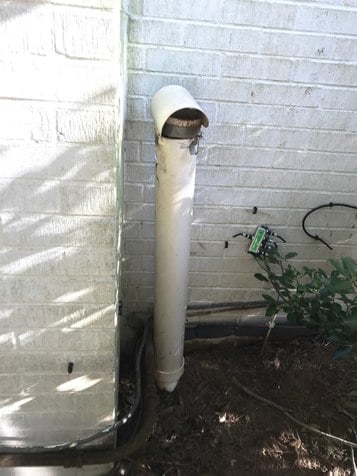Comments
-
Monitor placement locationHi, Wally.
There are two things being addressed here by the commenters: 1) Is this an optimal test location? and, 2) your original question: does this violate Protocols/Standards?
The answer to the first is obvious: it is not a good, representative test location, but that does not mean it violates Protocols/Standards. I always encourage testing each foundation area, but can not say an Inspector who tests in the basement, but not above the adjoining slab or crawlspace is in violation of Standards.
I say this is not a technically valid test placement either, because I don't think the monitor is 20" off the ground, it is in an area of high air velocity if/when any of the appliances are running, and MAH_2019 specifically mentions not testing in laundry rooms that are "isolated from large open areas by partitions". One could also argue the monitor is placed in a n area where it might be easily disturbed, as it is right in a walkway. -
Multifamily retestingThanks. I believe the confusion stemmed from the fact that this project started long ago, before HUD changed it's stance. (There were numerous long delays for COVID, Brownfield issues, etc.)
-
Multifamily retestingthanks so much. I wasn't sure where to find the latest HUD revision.
-
Slate tile and antique radios as a radon source?One more weird one:
Years ago at Symposium someone (Bill Brodhead?) told me a tale of a problem house where a major radon entry point was the large conduit to the bottom of the electric breaker panel, the other end of which terminated underground. Sealing the upper end of that conduit dramatically reduced radon concentrations in the basement.
Fast forward several years: In the basement of a difficult house I was working on, I noticed an electric wire in a 1" pipe that went through near the top of the exterior wall. I went outside and found that the 1" pipe was inside a 2" pipe buried in the ground: the pie was about 2 feet long and open on the end which was buried and the end which was in the basement. -
Slate tile and antique radios as a radon source?1) Are there floor drains or plumbing drains that terminate below ground and have no traps, or traps that are dry from disuse? They may great soil gas entry points even when you have a negative relative subslab pressure.
2) Look at the garage or any other large slabs whose foundation walls are also basement walls, particularly any slabs that have been added or enclosed in recent years. We just "fixed" a house that had an existing 3-suction point system in the basement by mitigating the garage on the main level, which was an open carport when the original work was done. (There was tight clay with no PFE under the basement slab, which is why I looked at the garage).
3) One can also look for hotspots (such as radio rooms) by simply closing doors between rooms and placing test devices in each room.
4) I assume you have ruled this out, but will mention it anyway: Was the testing conducted with a properly calibrated monitor in a proper test location, by someone who knows how to use it? Electronic interference and defective monitors are always possibilities. With a Corentium Pro (and maybe others) it is possible to print the wrong dataset from the several it stores: printing the same dataset will always yield the same result!
5) Are the HVAC supply vents closed in the basement?
6) Is there an HRV, ERV, or ventilation unit in the house that has a plugged intake or dirty filters, or is turned off? That may be what was actually controlling the radon previously when it was operating properly. -
Cringe of the DayActually, we ran a radon test, which showed that the system is not even needed at the current time. I suggested the homeowner test in the Winter, and tell his Builder to leave radon mitigation to the Professionals!
-
Dr. Burkhart Receives award in Recognition of his extensive work in Radon ScienceCongrats to one of my mentors!
-
Minnesota Radon RulesThoughtful of them to add a cap so the exhaust can be diverted to BOTH windows!
-
Minnesota Radon RulesI'll call your floor-level suction and raise you a snorkel! (Yes it is the exhaust for the buried fan).


-
Minnesota Radon RulesI'm with @Randy Weestrand. We are a non-regulatory State and I see ineffective, defective, and dangerous installations by people who don't know, or don't care, what they're doing on a regular basis (most of you have seen the slides!). I went with others to the State capitol to advocate for basic regulation. I am very much for limited government and personal responsibility, but we ARE dealing with a radioactive Class-A carcinogen here! My pitch to the State was that they don't need to re-invent the wheel, or have a program that costs the State anything. Require Certification and Insurance, (both of which are readily available), Have inspectors, and charge a fee per year or per system that will cover the cost of the inspectors and administration. Most Pros won't mind, as long as everyone pays the same fees and plays by the same rules.
-
radon testing in an hourYes. Locally, we have a "professional" home inspector who has been offering mitigation advice based on one=hour readings from a RadonEye home monitor. I have explained protocol to several Realtors, and reported his actions to our State Radon office. I can say that at least one of his clients was very unhappy with him.
-
Radon Exposure: A Leading Environmental Cause of Cancer Mortality in the United StatesThanks for sharing, and spreading the word, Bill!
-
reasons for mounting the fan and exhaust piping outside building envelope in USDoug, your reasoning is correct. Conditioned attic spaces are relatively new (in our area) and are not addressed in Appendix F of the Building Code, which is what the Builders go by. It is my understanding that work is being done to reconcile Mitigation Standards with the Building Code, but Code changes take years even when unopposed.
A very logical solution to this concern is to require a remote radon sensor, such as the Airthings Wave, in the same attic space with the fan to warn occupants of any leakage.
I am with Bruce as far as wondering why it is ok to vent carbon monoxide from gas appliances through a living space and exhaust it below windows.
What I have learned from trainings, articles, and colleagues about rim-joist venting (as is done in Canada) is that safety studies show mixed results. -
I have 2 questions.Hey,George. Put the piping in as depicted in Appendix F of the Building Code.
Radon is a radioactive gas, and all radiation damage is cumulative over one's lifetime, so the lower exposure is at any given time, the better off one is in the long run. Best guess from EPA is that a properly-done passive system may give as much as a 50% reduction in radon concentrations without a fan.
Radon, like most things, seeks equilibrium concentration-wise and pressure-wise. Venting above the roof allows the gas a pathway from the soil to the atmosphere (as occurs outdoors) without coming through the house.
I do not know if conditioned attic spaces are the norm in your area, but be aware that Radon Mitigation Standards do not allow fans or exhaust-side piping (if needed) to be within the conditioned envelope of the house.The passive piping should be run through a ventilated attic space, or a ventilated space be created within a conditioned attic. -
Radon Testing Hygiene Protocol In Times of COVID-19 (Coronavirus) and Similar ContagionsThe article seems to say that test kits going to the lab should be wiped down and sent in zip-loc bags. Charcoal kits, also??
-
How would you improve this Rubble Stone Wall mitigation?I'm with Don. There could easily be radon from a source other than the floor, such as emanation from the stone walls.
-
Favorite CRMs?I really like the Bluetooth and programmable start/stop times, and compact size, of my Corentium Pros, but my femto-TECH 510s do provide a much smoother "data curve" which is helpful with diagnostics. I haven't really looked into it yet, but I think the RadonEye PRO has very high counts for a less expensive CRM.
-
Yes, he is still Certified.I did provide a detailed list of violations, with appropriate citations from the Standards and photos, that the client can pass on.
-
Solar radon systemsI wanted to develop a solar-powered fan a few years ago, and discussed it with my neighbor who installs solar systems. Bottom line is that it is possible, but not practical. I envisioned a 4-6" sq. solar panel on top of the fan, like a landscaping light, but it turned out the panel would need to be about 3' square, and with the necessary storage batteries for night time and cloudy days, the setup would run about $3500.
Henri Boyea

Start FollowingSend a Message
- Terms of Service
- Useful Hints and Tips
- Sign In
- © 2026 Radon ListServ

